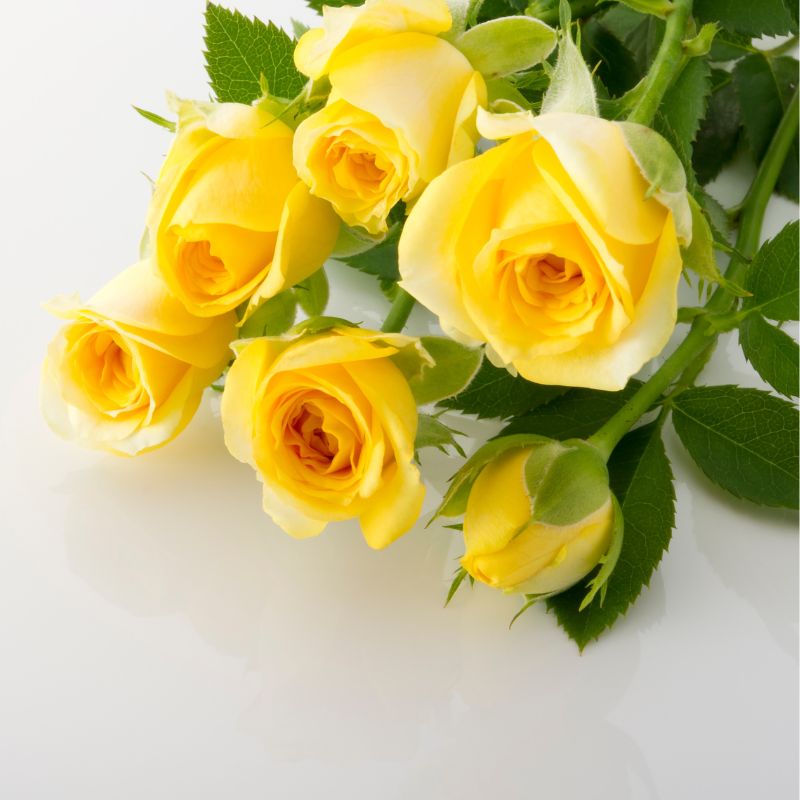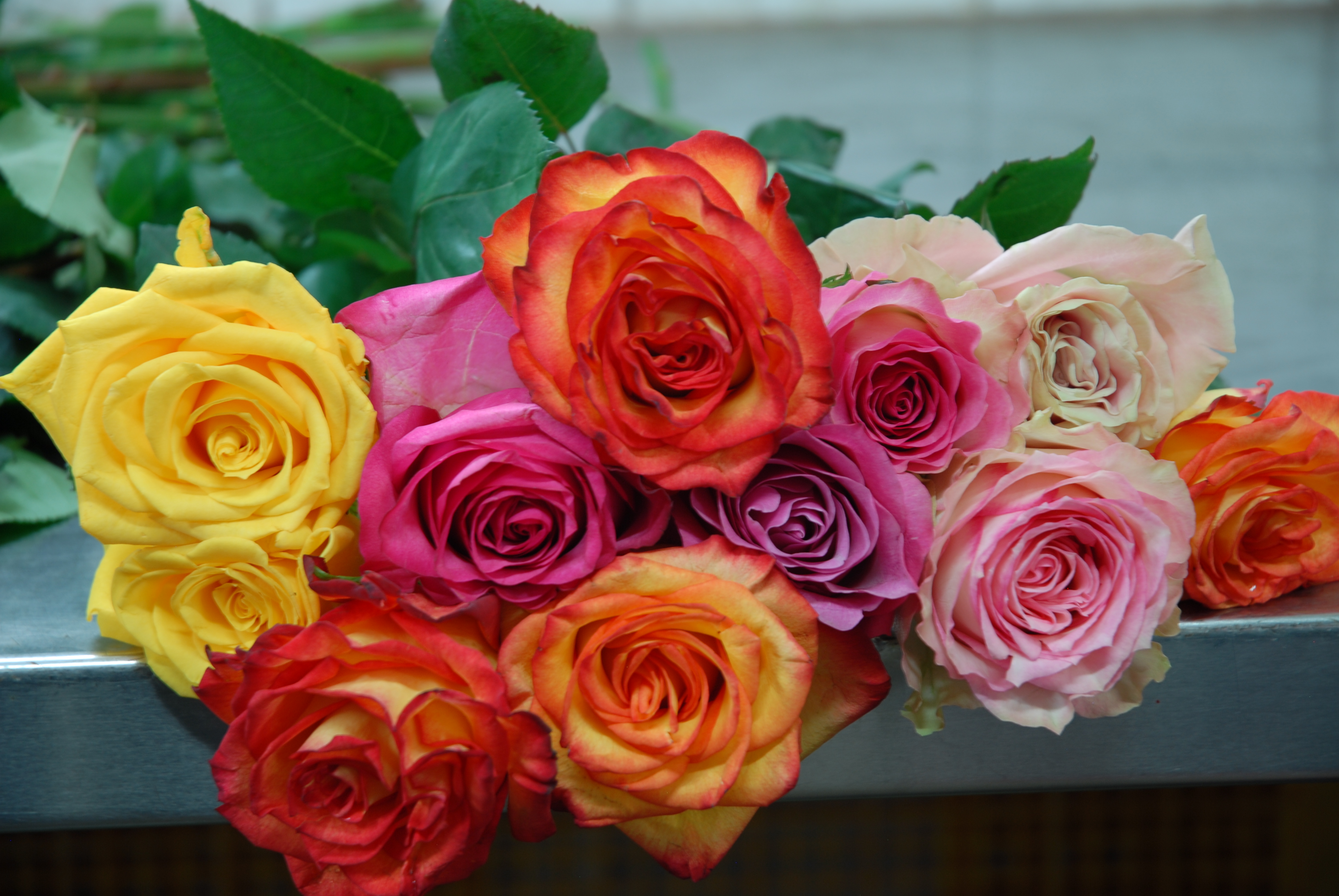How to preserve a bouquet of roses?
Our tips and tricks for getting the most out of your bouquet
Do you love roses? Do you enjoy giving or receiving them? Would you like to keep them as beautiful and fresh as the first day, for as long as possible? Here are our expert tips.
Some basic rules
Queen among flowers, fascinating and captivating, the rose has survived the centuries without losing its supremacy or splendor. An undeniable symbol of love and passion, the rose is an inexhaustible source of inspiration. It is also one of the rare flowers found practically year-round in florists. There are hundreds of different varieties, with sometimes surprising and original colors and shapes. In this article, you will discover that even though the rose remains the favorite flower of many of us, very few truly know how to care for it.
You'll also learn that the quality and provenance of certain roses can really make a difference in terms of sustainability, and that not every rose is necessarily a good buy!
A brief overview
Rose bouquets
A love story that lasts
Roses have been cultivated in China and Persia for five thousand years, and in Greece since the Bronze Age. Ancient literature and poetry often refer to the rose, although it is not easy to define its species or variety with certainty. The rose was considered by the Greeks and Romans to be a gift from the gods. It was seen as a symbol of spring and the fragility of the world. Associated with the goddess Venus or Aphrodite, the rose was a token of love and beauty.
Currently, the rose is one of the most cultivated plants in the world and occupies the first place in the flower market. But rose bushes are also wild plants (the best known in our latitudes is the dog rose) with simple five-petaled flowers, which have become fashionable, for their more natural appearance, in recent decades under the name of "botanical roses" or "simple roses"
The cultivated rose bushes from which our favorite roses are derived are the result of several millennia of transformation, particularly through hybridization. The varieties are countless; it is estimated that more than 3,000 cultivars are currently available worldwide.


How to find your way around?
How to find your way around?
So how do you find your way around, and where can you buy the best possible quality roses? To begin with, it's important to favor short supply chains (buying directly from the florist or from your local florist). In terms of price and quality, it's best to avoid large retailers, which have large stocks but are often poorly packaged (no proper trimming or watering, and the cold cycle isn't always respected). Moreover, some florists work by limiting the use of middlemen, which reduces costs and promotes flower quality. While it's possible to find magnificent roses produced in Switzerland in stores, the season is obviously very short (May-June).
In Geneva, you can find GRTA-certified fragrant roses produced in the canton. For the rest, you should know that roses on the market come from all over the world, but some producing countries stand out for the excellent quality of their production.Never hesitate to ask where your roses come from! The main producing countries are Colombia, Ecuador, and Kenya. At the European level, Holland ranks first.
At Bouvard Fleurs, we work primarily with Ecuadorian growers, who have been providing unrivaled rose quality for years. For the past twenty years, our company has worked closely with Ponte Tresa. This Swiss-owned Ecuadorian company, founded in 1985, owns three farms located in the Andean highlands, at an altitude of 2,850 meters. Benefiting from the intensity of light found in the middle of the world and a perfect microclimate, Ponte Tresa cultivates roses in a multitude of different shades, with long stems, intense colors, glossy foliage, long-lasting and perfect opening.
On the other hand, Kenyan roses are longer, but have much smaller buds). Having no middleman (the flowers are cut in Quito, then shipped directly to us), we can afford to provide you with excellent quality roses, at an unbeatable price!
Rose bouquets
Be Careful
When purchasing roses from your chosen retailer, you'll need to pay attention to certain details if you want to avoid disappointment later on. Carefully examine the petals, leaves, and stem of the roses you've chosen. Do the petals appear stained? (Possible signs of mold growth at the base of the corolla and between the petals)? Does the rose head droop or seem limp? Move on! Are the leaves dried out or yellowed? Run away! Furthermore, if the rose stem is blackened or slimy at the tip, this is a sign of poor care and an inadequate water change.
If, on the other hand, the roses you've chosen stand upright, are firm, have glossy, bright green foliage, and a stem free of discoloration or stains, you're good to go!
Don't be fooled by the scent, however; most modern commercial roses lack it (scent means shorter lasting power).


Taking care
Once you've made your purchase, you shouldn't delay! In fact, many people don't know this, but roses can't go more than an hour without water. After that, they can already begin to wilt. It's therefore imperative to put your flowers back in the water as soon as possible.
Once you get home, you will need a clean and suitable vase (don't hesitate to wash it in hot water beforehand). It is important to take into account the physiological needs of the rose. The latter drinks ENORMOUSLY, and it is imperative to provide it with a vase where more than half of the stem will be in water. Below this or with a container that is too small, your roses will very quickly have their heads down. If this has not been done, you will need to cut the stems of your roses at an angle with a clean, toothless knife. Try to make a clean, slanted cut, about 2 cm long. This will help your roses drink more easily once in the water. If some leaves are a little damaged or have broken during transport, remove them. The same goes for marked or torn petals.
Once your roses are placed in the vase, you can add as much water as possible, taking care that no leaves are soaking in the vase (this will make the water turn faster). Readjust the size of the leaves accordingly. For the water temperature, choose lukewarm water (neither too hot nor too cold). For optimal longevity of your roses, it is very important to completely change the water in the vase every two days. Clean it with dish soap and a sponge.
You can optionally add a preservative to the vase water. These special solutions for the care of cut flowers are readily available at most flower shops. They mainly contain chemical agents that prevent the proliferation of bacteria in the water and nutrients for cut flowers. If you're not a fan of chemicals, you can simply clean your vase regularly and change the water regularly.
There are many popular beliefs about the care of roses and cut flowers in general. Grandma's tricks such as hammering the stem, adding sugar to the water, or an aspirin should definitely be left in the cupboard! While you may think you're doing the right thing by adding sugar to the water, this technique is far from proven, and tends to feed the bacteria present in the water and in the deposits produced by the stems. The same goes for hammering, which irreparably destroys the water circulation channels inside the rose stem. The stem thus reduced to a pulp will accelerate the appearance of bacteria, responsible for unpleasant odors, and in the long run, the poor condition of your flowers.
If you want to preserve your bouquet of roses as long as possible, it's a good idea to place it in a relatively cool room, away from heat sources (avoid placing it behind a window or near a heater). To help your roses slow their blooming, you can place them outside at night or in an unheated room. Be careful not to expose the flowers to frost in winter. It's also important not to place your bouquet near fruit dishes. As fruit ripens, it accelerates the blooming process.
Finally, it's important to remember that the shorter a rose, the longer its lifespan (a long stem means less water is able to reach the flower). If your roses start to look tired, don't hesitate to re-cut them and place them in a vase suited to their water needs and their new length.
Rose bouquets
FAQ
How long can a well-maintained bouquet of roses last?
At Bouvard Fleurs, it's not uncommon for our customers to keep their roses for at least 15 days! With proper care and sufficient water, a basic bouquet of roses should last at least a week.
What are the signs that a bouquet is starting to deteriorate?
Generally, a tired rose will begin to lose its luster and tone. The buds are generally softer, and the first signs of mold may appear. If the leaves of your bouquet begin to dry out, this is also a sign of deterioration. Finally, the stem will turn yellow or black and become increasingly slimy.
How to recover drooping roses?
With lots of water! It's imperative to carefully cut the stems and place the flowers in as much lukewarm water as possible without delay. After a certain stage, it becomes difficult to get them to stand up!
How to dry a rose naturally?
It is imperative to give the rose plenty of water before attempting to dry it. Once it has had enough water (more than 48 hours), you can hang the flower upside down in a dry, well-ventilated place. To preserve the color of the rose as much as possible, you can first lacquer it with a fixative or hairspray.



